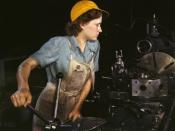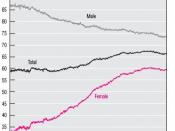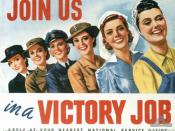The role of women in the workforce as well as society's attitudes towards them has changed dramatically over time in Australia. Women have been allowed to open the door to the world of work and this is a great improvement from what it used to be. They are generally adopted and accepted into our workforce but much still needs to be done to ensure that this is preserved.
Once, women were personified as the mother figure that stayed at home, cooking, cleaning, looking after the children and relied solely on her husband for an income. Women were not allowed to work and frowned upon if they did. At this time, during the 1800's and early 1900's, women played an extremely minimal or no role in the workforce. Stereotypes that women were incapable, fragile and incompetent shaped the attitudes of society of that time, and these stereotypes still exist today.
Around 1895 the government allowed the first women to work as typists, shorthand writers and machine operators.
However, deep-seated attitudes prevented women from being hired and the few women that were clustered in more traditional roles, such as teaching and nursing. World War I saw a shortage of men. Women were hired in clerk positions that were previously dominated by males. Although the number of women in the workforce increased in 1938 to 9198, primarily as teachers (5536), they were paid little even for doing the same as men and were required to resign on marrying. 27.5% of women employees were temporary, even though their work was of an ongoing nature. This barred them from superannuation benefits and from access to promotion.
World War II (1939-1945) began the change of the role of women in the workforce. Men went off to fight women entered into predominately male roles. Women were trained...


